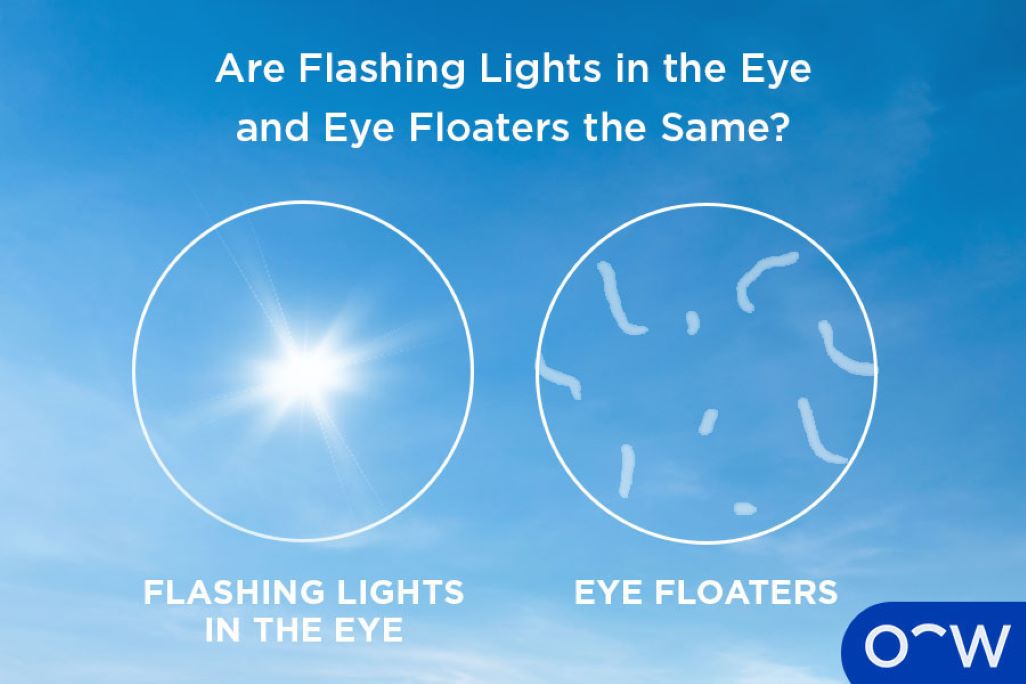Introduction
Our eyes are complex organs that provide us with the ability to see and interpret the world around us. However, sometimes we may notice unusual visual disturbances like floaters and flashes. While these phenomena are often harmless, they can sometimes signal a more serious underlying condition. Understanding the causes, symptoms, and warning signs of floaters and flashes can help determine when to seek medical attention.
What Are Eye Floaters?
Eye floaters appear as tiny spots, strings, or cobweb-like shapes that drift across your field of vision. They are more noticeable when looking at a bright background, such as a clear blue sky or a white wall. Floaters occur due to tiny clumps of gel or cells inside the vitreous, the clear gel-like substance that fills the inside of the eye. These shadows cast on the retina create the appearance of floaters.
Causes of Floaters
Floaters are primarily caused by the normal aging process, but they can also result from other factors such as:
- Aging: The vitreous gel shrinks and becomes more liquid, leading to clumps forming within it.
- Posterior Vitreous Detachment (PVD): The vitreous pulls away from the retina, leading to an increase in floaters.
- Eye Inflammation (Uveitis): Inflammatory conditions can cause debris to form inside the eye, leading to floaters.
- Retinal Tears or Detachments: A sudden increase in floaters may indicate a tear in the retina, which can lead to retinal detachment.
- Bleeding Inside the Eye: Blood from damaged blood vessels can cause floaters.
- Eye Injuries or Surgery: Trauma or past eye surgeries can lead to floaters.
What Are Eye Flashes?
Flashes appear as brief streaks or bursts of light in the peripheral vision, similar to lightning flashes or sparks. These flashes occur when the vitreous pulls on or tugs at the retina, stimulating it and causing the perception of light.
Causes of Flashes
Flashes can occur due to various reasons, including:
- Aging and Posterior Vitreous Detachment (PVD): As the vitreous shrinks with age, it can pull on the retina, causing flashes.
- Migraine Auras: Some people experience flashes in the form of jagged lines or shimmering lights before a migraine headache.
- Retinal Tears or Detachments: Persistent flashes may indicate a serious issue like a retinal tear or detachment, requiring immediate medical attention.
- Head or Eye Trauma: A sudden impact to the head or eye can trigger flashes.
- Optic Nerve Issues: Conditions affecting the optic nerve may also cause flashes.
When Should You Be Concerned?
While occasional floaters and flashes are common and often harmless, certain symptoms indicate a more serious condition that requires immediate medical attention:
Signs That Require Urgent Medical Attention
- A Sudden Increase in Floaters: A rapid appearance of multiple floaters may indicate a retinal tear or detachment.
- Persistent or Frequent Flashes: If flashes occur frequently or suddenly, they may signal an issue with the retina.
- A Shadow or Curtain Over Vision: This symptom suggests retinal detachment, which requires urgent intervention to prevent vision loss.
- Blurred or Distorted Vision: If your vision becomes blurry, wavy, or distorted along with floaters or flashes, seek medical help immediately.
- Loss of Peripheral Vision: This is a warning sign of retinal detachment.
- Pain or Redness in the Eye: These symptoms may indicate inflammation or another eye condition that needs medical evaluation.
For Consultation Contact us on 9168690447 / 9158681123
Website –
www.chetnahospital.co.in
Address – Chetna Hospital, Sambhajinagar, MIDC, G Block, Near Rotary Club, Chinchwad 411019
.
.
.
#hospital#pune#pcmc#chinchwad#health#healthcare#gynaecologist#femalegynaecologist#gynaecologistappointment#gynac#gynaecologistdoctor#gynaecologisthospital#goodgynaecologist#gynaecologistspecialist.













